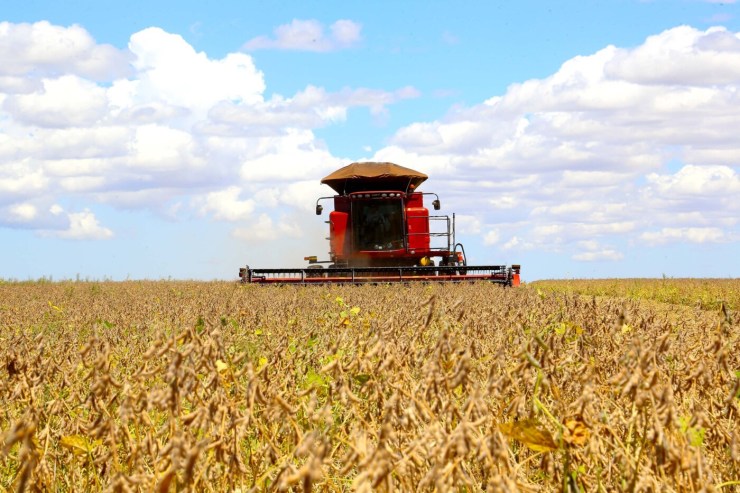The industries in the soybean and biodiesel chain performed well in 2024, before and after the farm gate, with advances of 3.98% in the inputs industry and 2.81% in the agribusiness industry. The agribusiness result was influenced mainly by the strong advance recorded in the biodiesel industry, of 20.45%, according to studies carried out by Cepea (Center for Advanced Studies in Applied Economics), at Esalq/USP, in partnership with the Brazilian Association of Vegetable Oil Industries (Abiove). Despite this, the GDP of the soybean and biodiesel chain fell 5.03% in 2024 compared to the previous year, pressured by the failure of the soybean harvest and its negative impact on agribusiness services.

Photo: Disclosure/Coamo
Researchers highlight, however, that this retraction in the GDP of the production chain occurs after the significant advance of 23% verified in 2023. With this, and also considering the good results outside the farm gate in 2024, the soybean and biodiesel chain still added the second largest volume in its history in the year, behind only 2023.
Maintaining the behavior already observed in the third quarter, the fourth quarter was highlighted by a new and important improvement in the real income of the production chain, reflecting the increases in the prices of grain, soybean oil and biodiesel in the final months of the year. Even with this performance, there was still a decrease of 3.27% in GDP-income, which reached R$ 650.4 billion in 2024 (compared to R$ 672.4 billion in 2023). Researchers at Cepea/Abiove indicate that the 2024 level still significantly exceeded the pre-pandemic level.
With this value, in 2024, the GDP of the soybean and biodiesel chain represented 23.8% of the agribusiness GDP and a significant 5.5% of the national GDP. Considering the aggregated values per ton in 2024, the GDP generated per ton of soybeans produced and processed (R$ 8,108) represented 4.67 times the GDP generated by soybeans produced and exported directly (R$ 1,738).
Job market
In 2024, the soybean and biodiesel production chain recorded a decrease of 3.2% in the number of employed people, totaling 2.26 million workers, with reductions in agribusiness services and the primary segment (soybean). The soybean agribusiness had the greatest growth, with an increase of 20.71% in the number of employed people, reflecting the expansion of processing and production of feed and biodiesel.
The agroservices segment, despite being the largest in terms of employment, showed a drop of 4.98% in the number of employed people in 2024. This performance is mainly due to the failure of the 2023/24 harvest and the consequent reduction in demand for agroservices, partially offset by the growth in production in the agroindustrial segment. The figures for employed people are shown in Table 2.

Photo: Claudio Neves
The participation of the production chain in the Brazilian economy (2,24%) and in agribusiness (9,71%) reduced in 2024, reflecting this aforementioned slowdown.
The number of people with higher education in agribusiness, soybean production and inputs has increased, indicating a trend towards a more qualified professional profile in the production chain.
Foreign trade
Exports from the soybean and biodiesel chain totaled 124.10 million tons in 2024, a decrease of 2.54% compared to 2023. The exported value fell by 19.69%, totaling US$$ 54.25 billion. According to researchers at Cepea/Abiove, the reduction in value compared to 2023 was due to lower national production and the drop in international prices (-17.6%) – pressured by the significant global supply of soybeans. Table 3 summarizes the information on the values exported by the production chain.
China continued to be the main destination for exports, accounting for 59% of the total volume transported through the production chain, even with a reduction of 2.56% compared to 2023. China stood out mainly for soybeans (73.4%) and glycerol (78.7%). For soybean oil, almost 80% of the volume shipped went to the group of “other countries”, with the highlight being India. For bran, the main destinations were the European Union (42.9%) and Southeast Asia (32.4%), followed by the Middle East (12.4%) and East Asia (7.9%).
Imports from the production chain grew by a significant 338.09% in volume, driven by the shortage of marketable soybeans on the domestic market.





